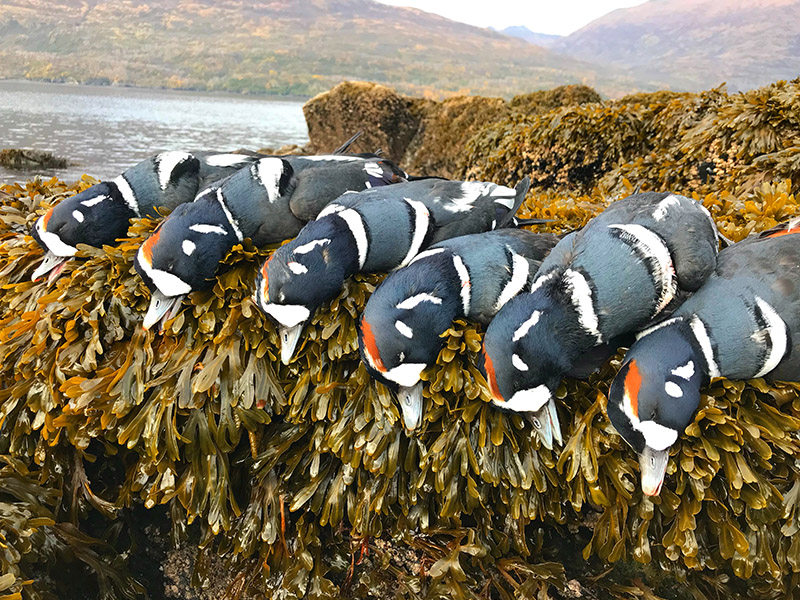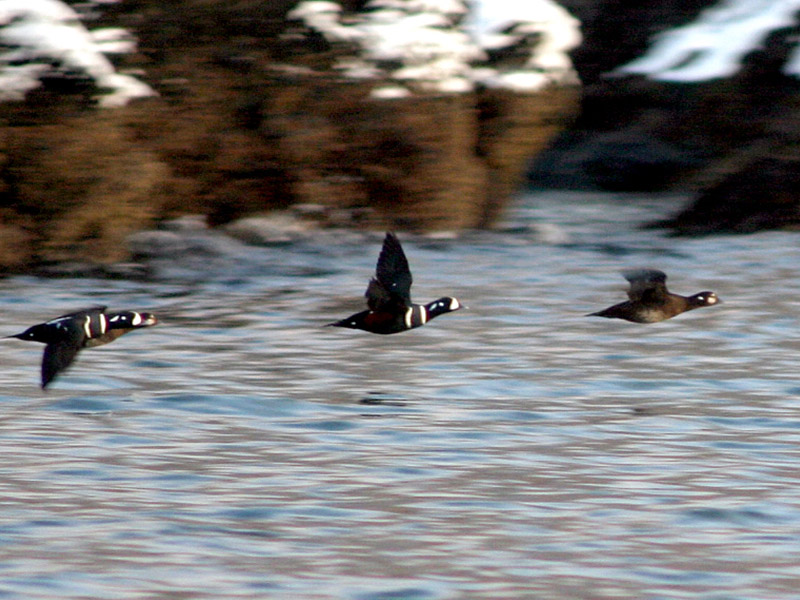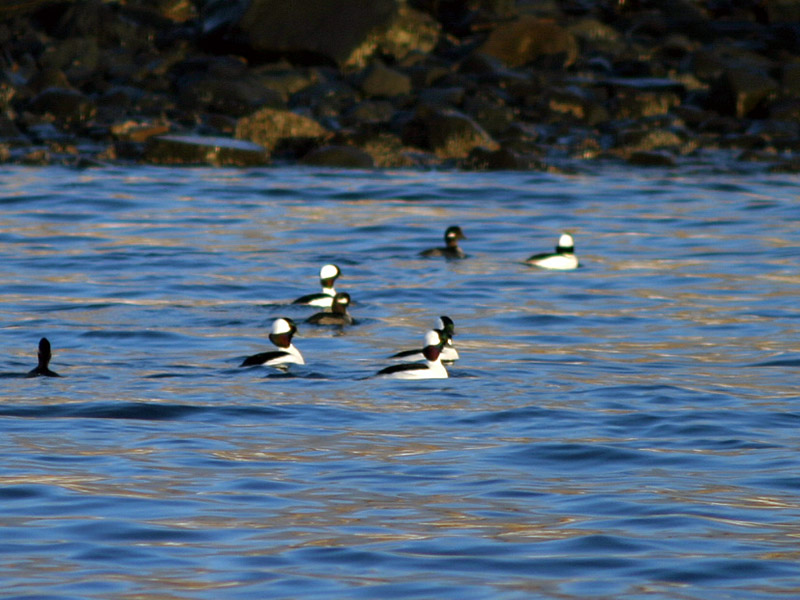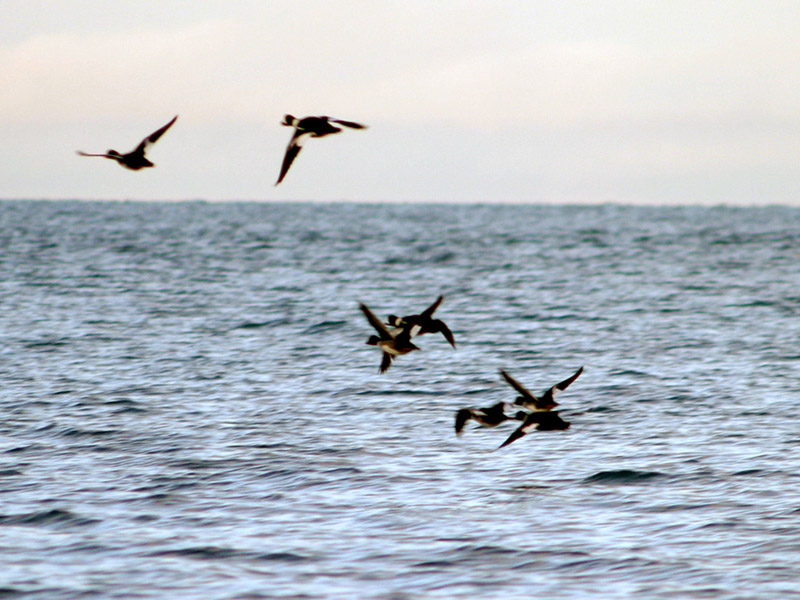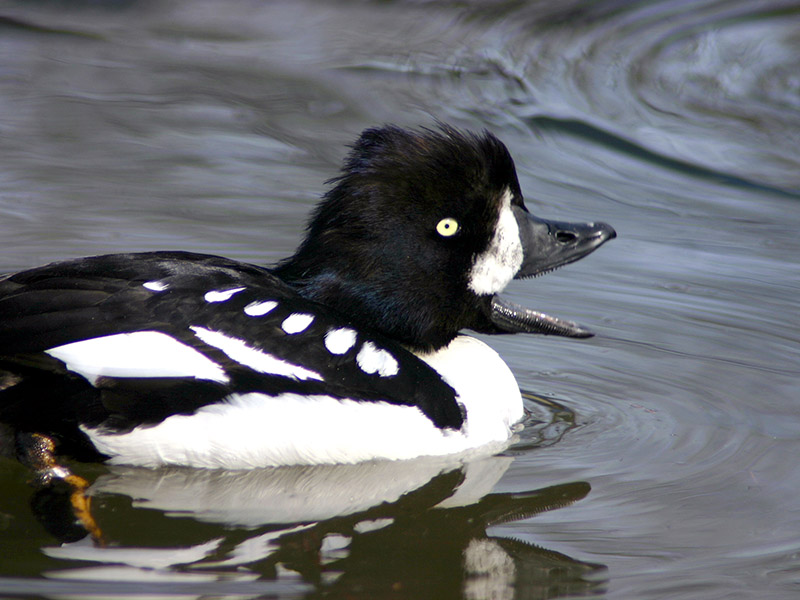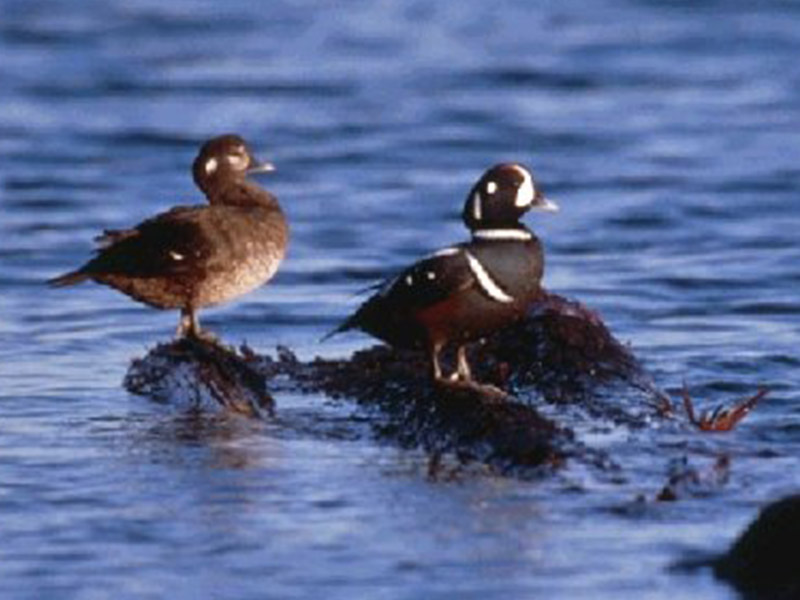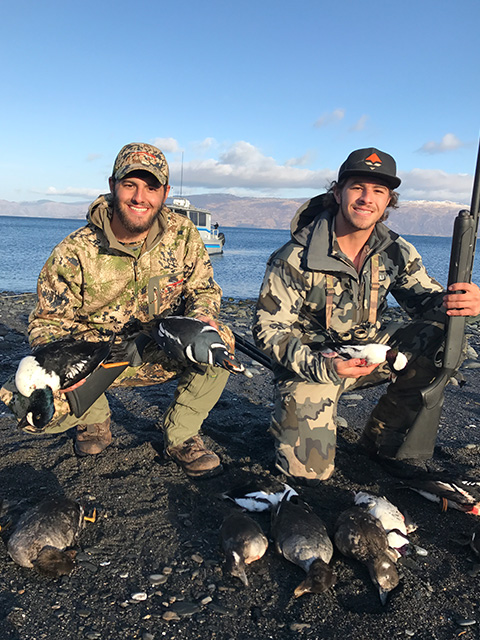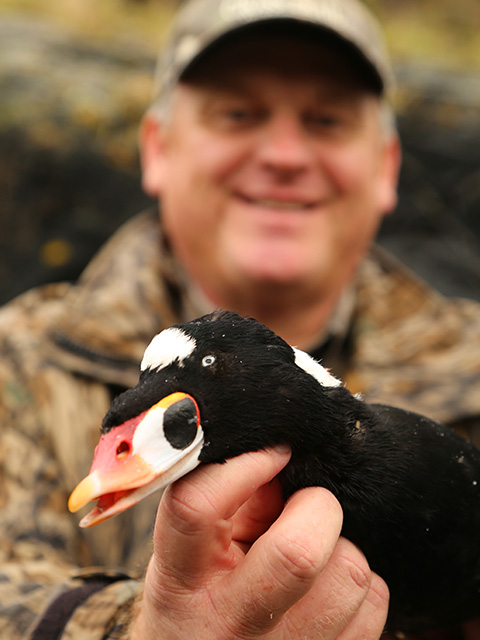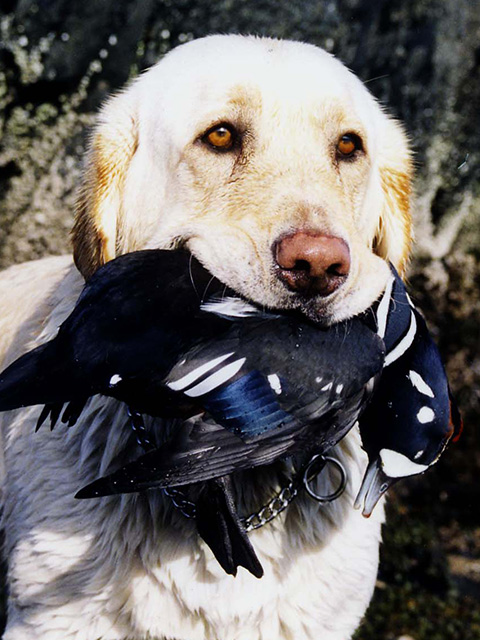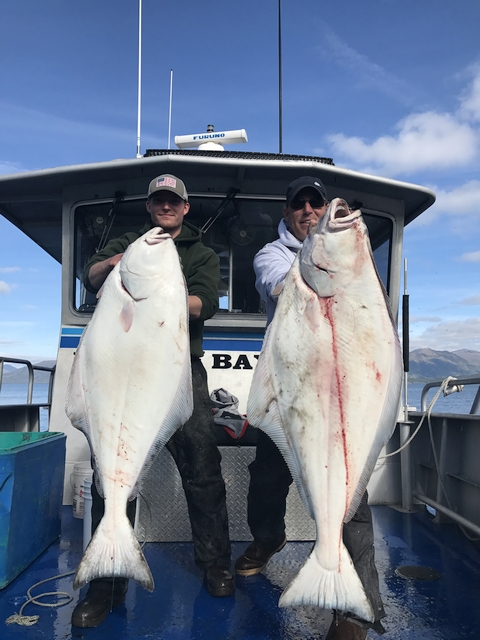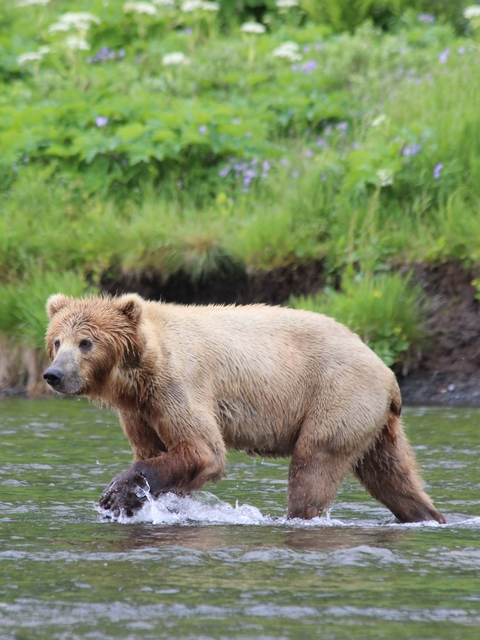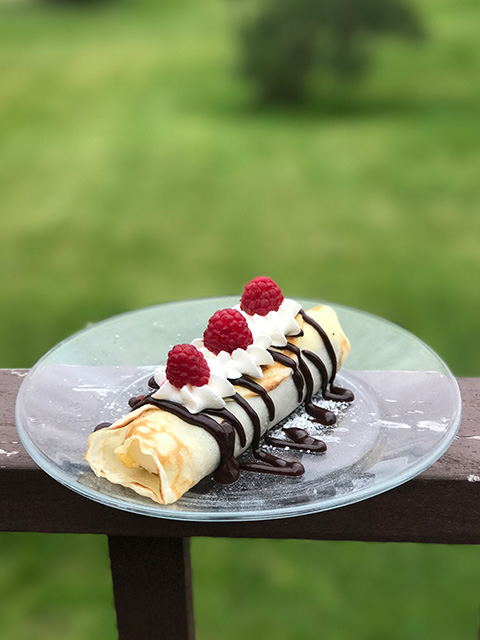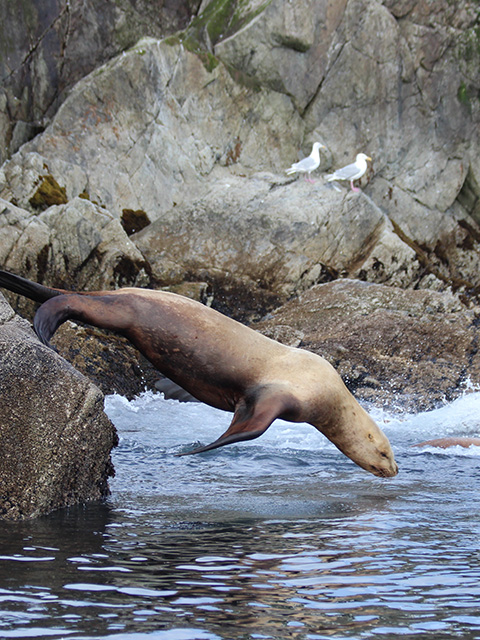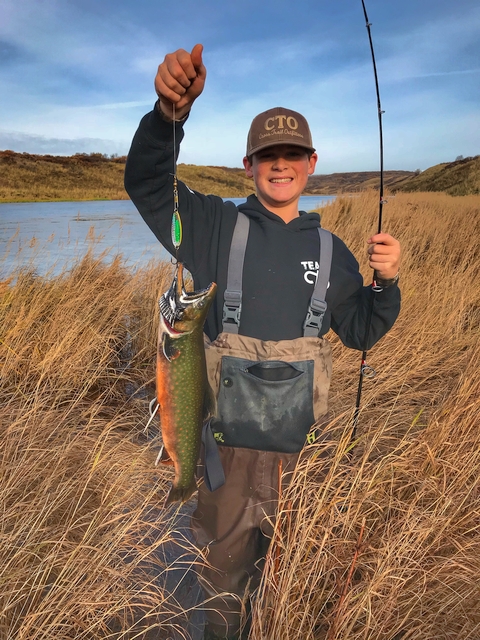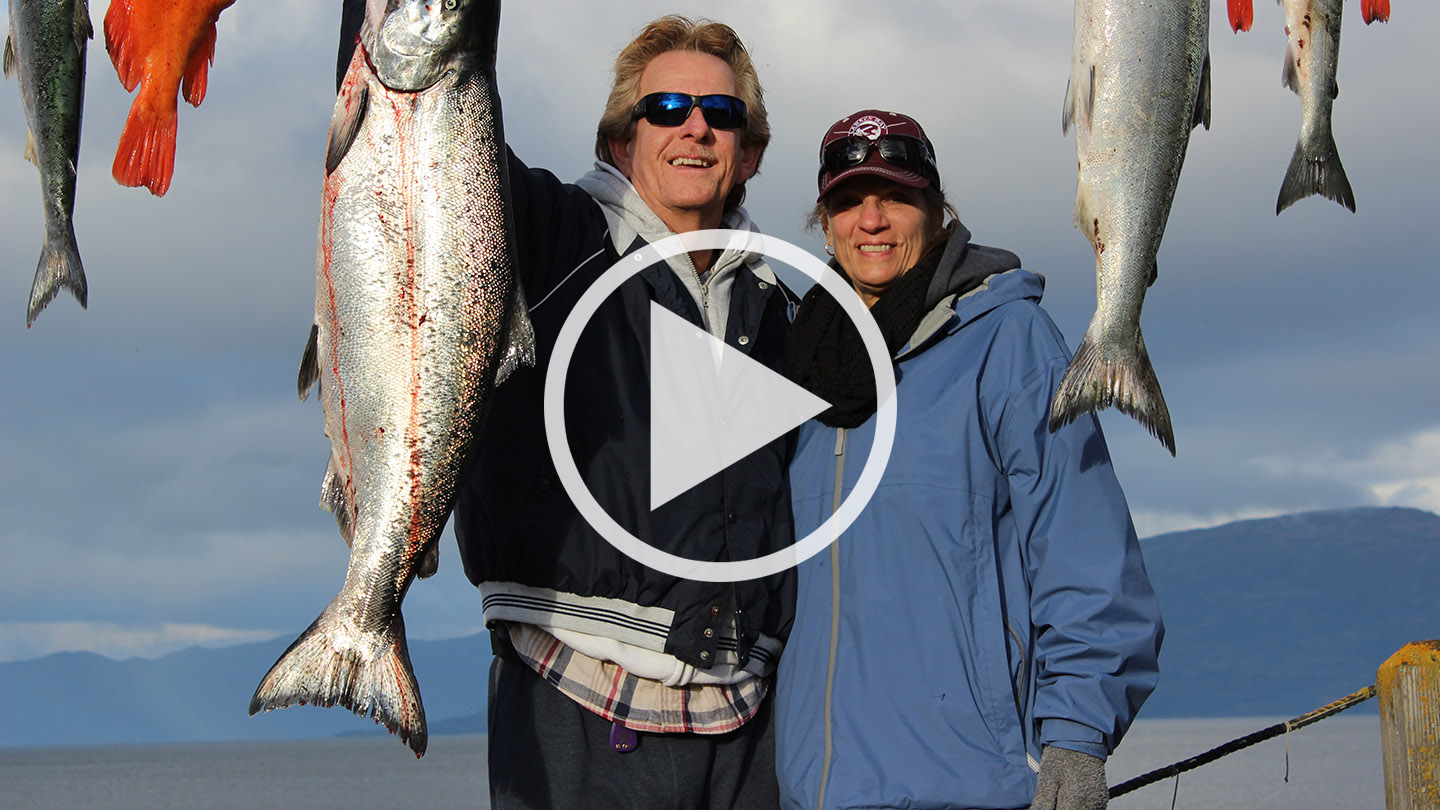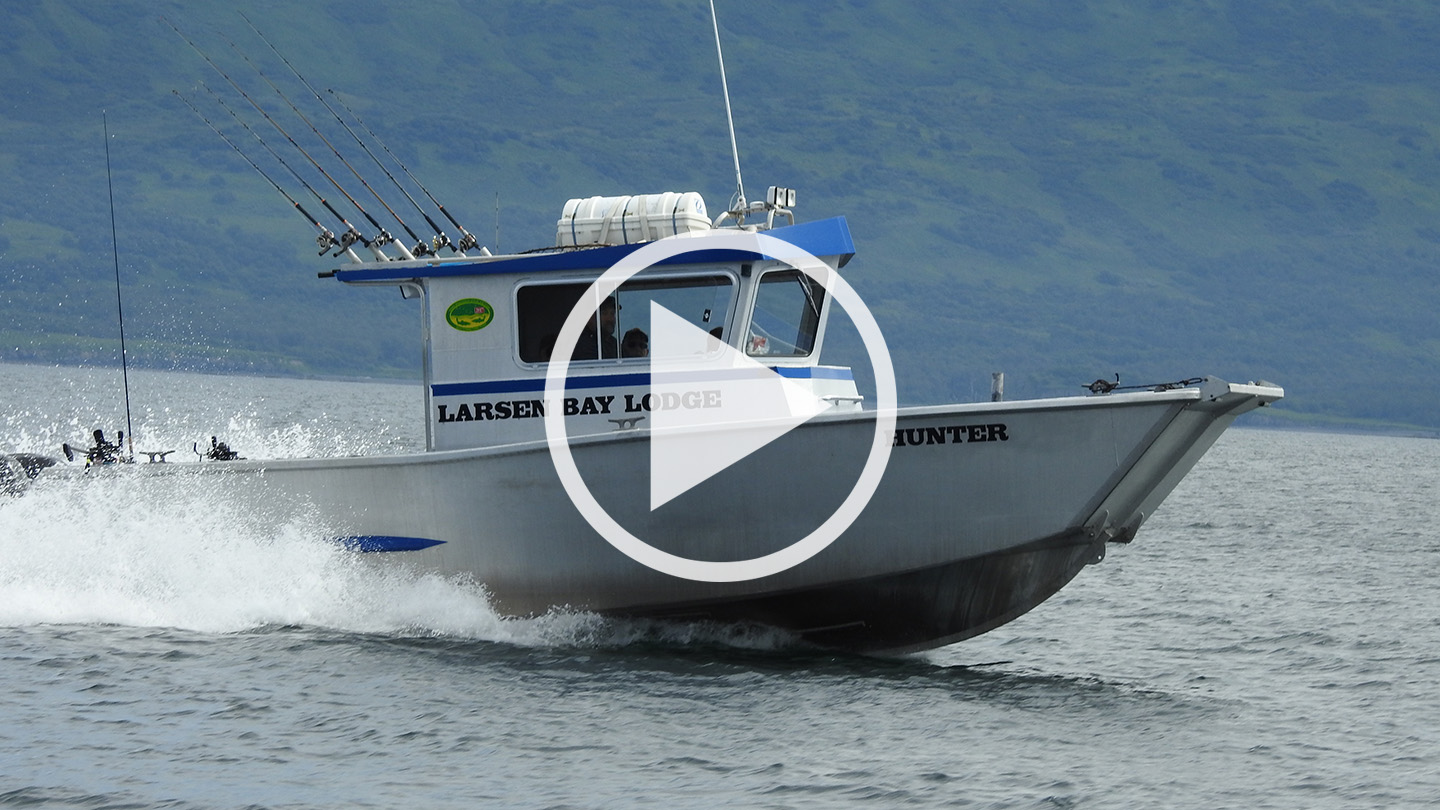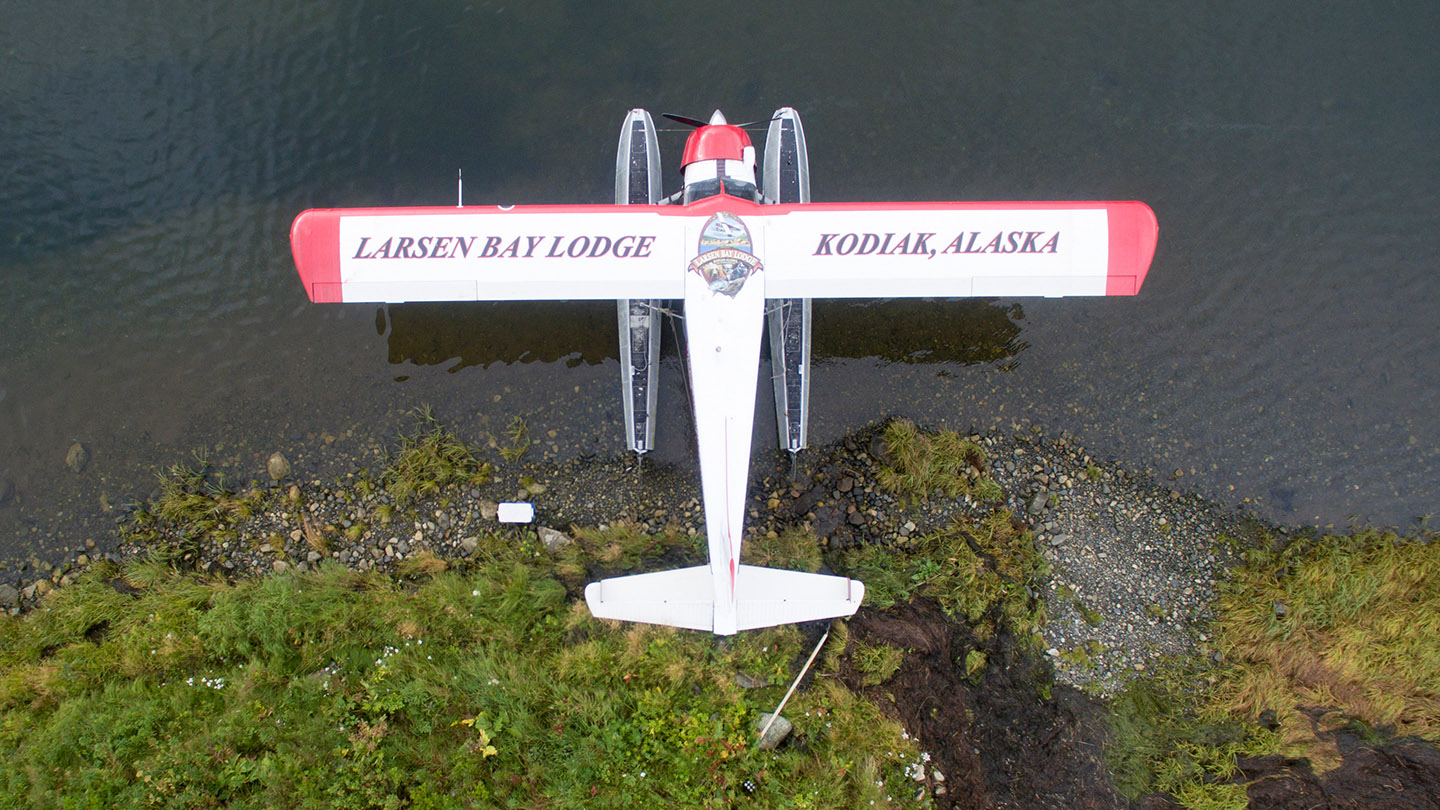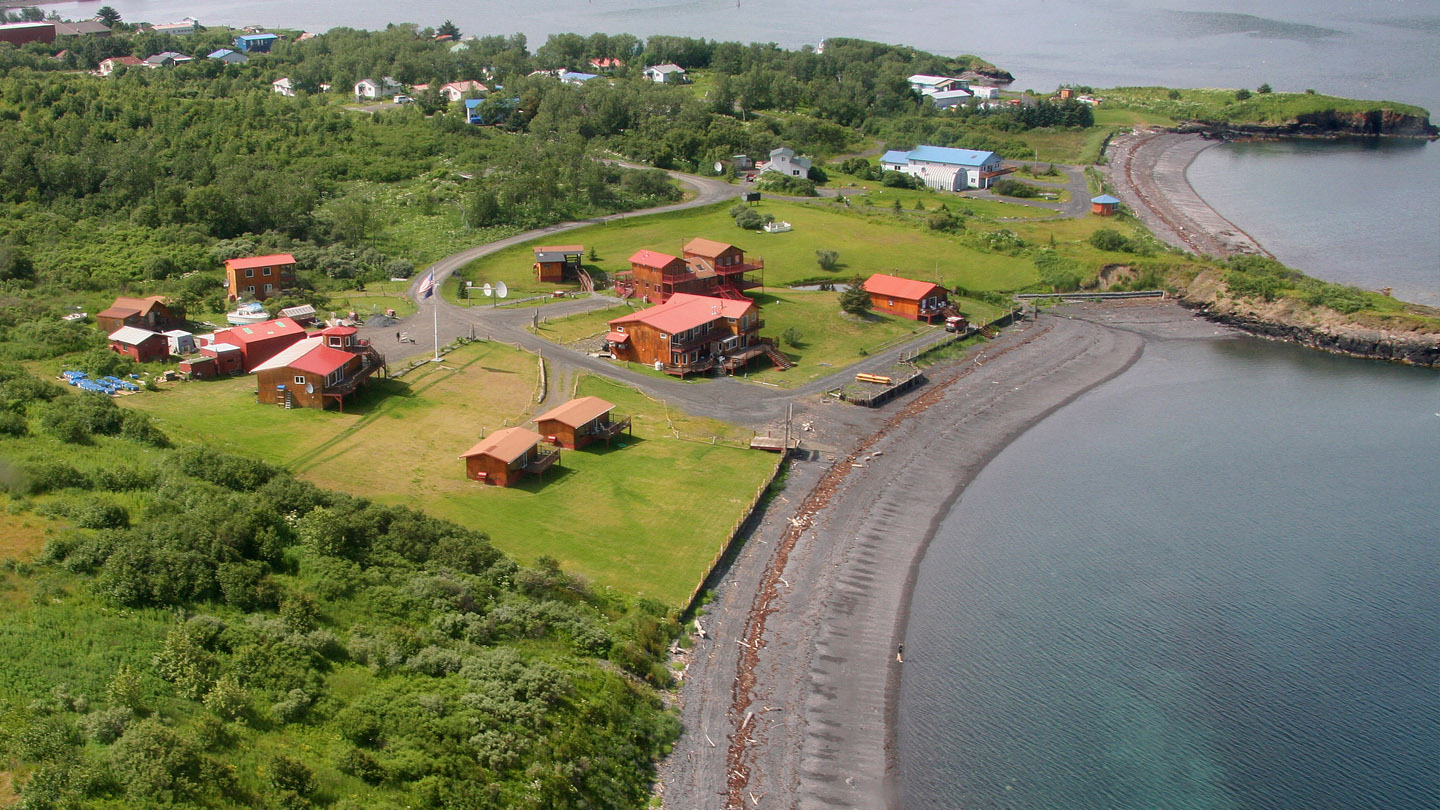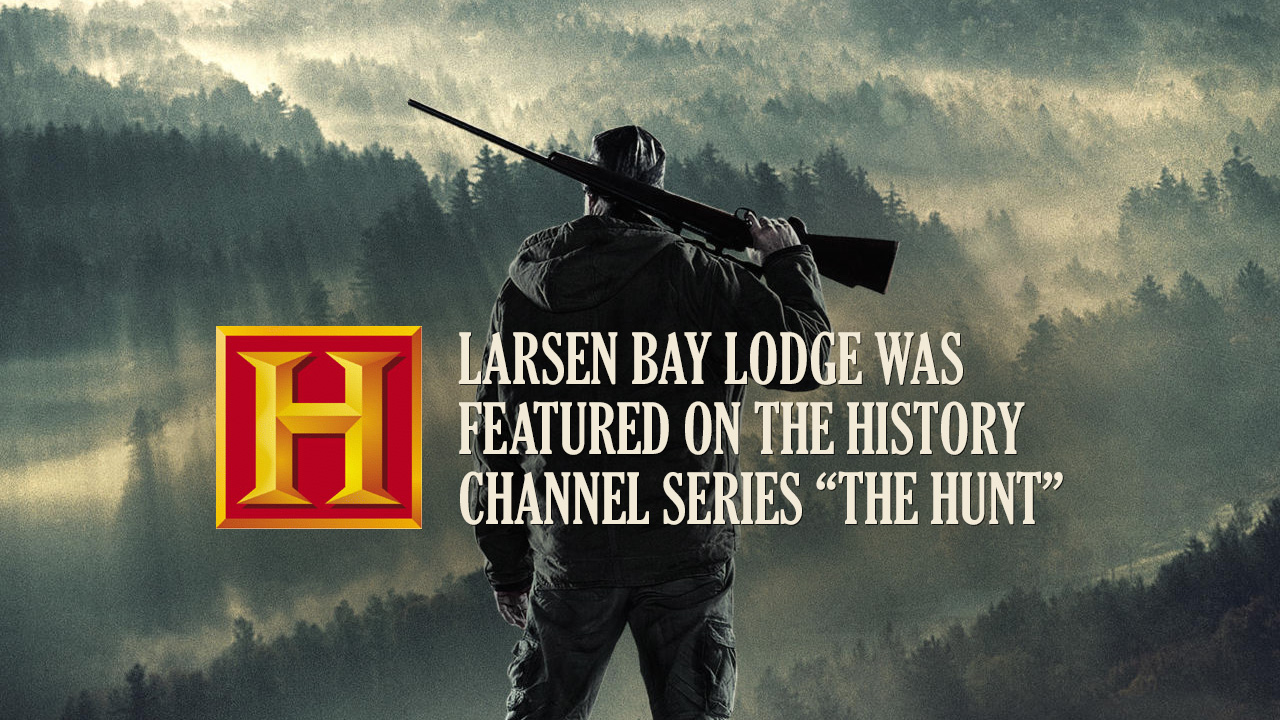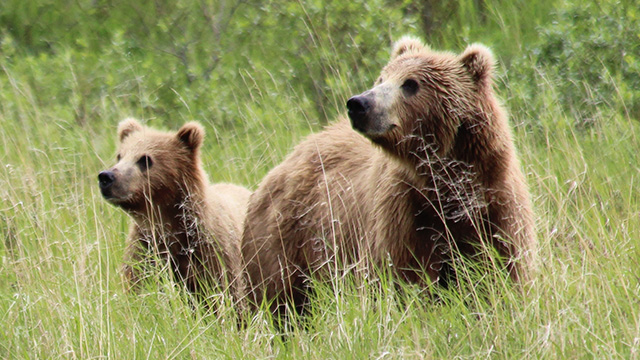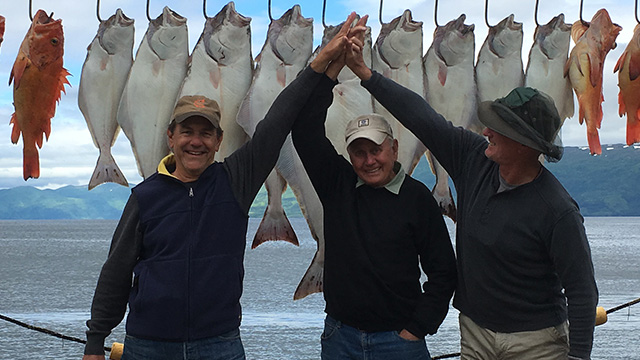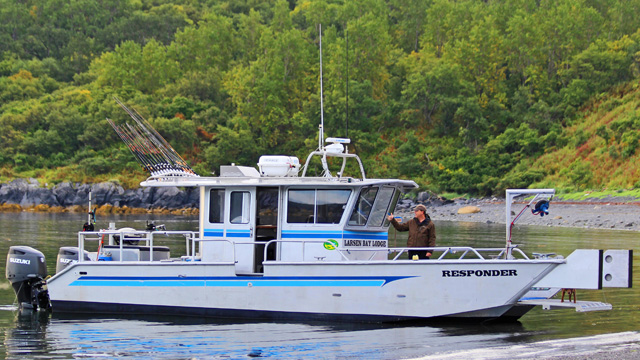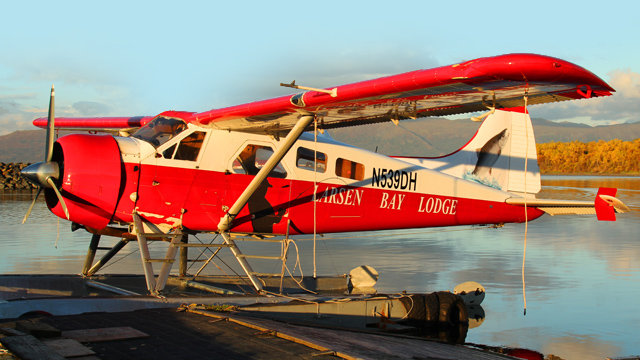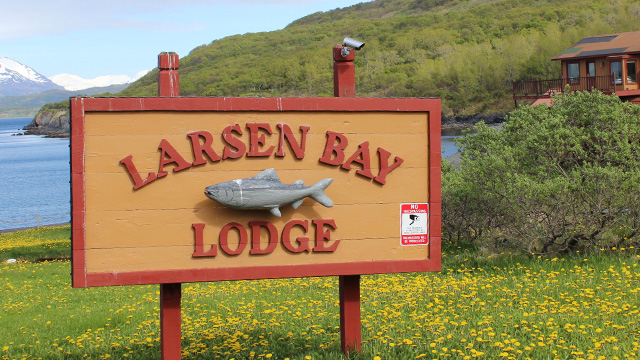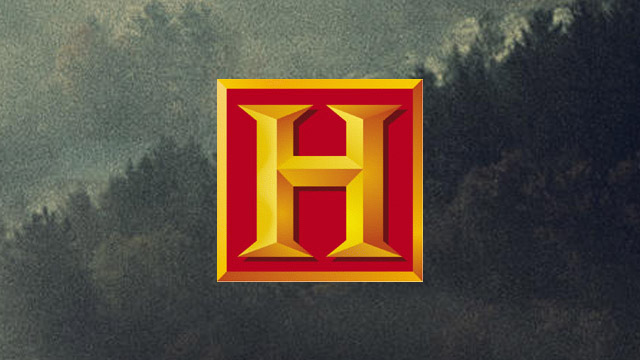Alaska Duck Hunting
Rated #3 in the world for variety of ducks

...And why not with the natural abundance of one of the most sought after waterfowl species in North America - the harlequin! The distinctively marked and stately blue-gray harlequin spends most of the year in Alaska. Many harlequin winter in the mild open bays of Kodiak Island. At Larsen Bay Lodge harlequin rule! They are usually the most predominant duck species found here, along with another trophy duck - the Barrows Goldeneye. A larger cousin of the common goldeneye, the Barrows Goldeneye is rarely scene east of the Rockies, but is abundant at Kodiak.
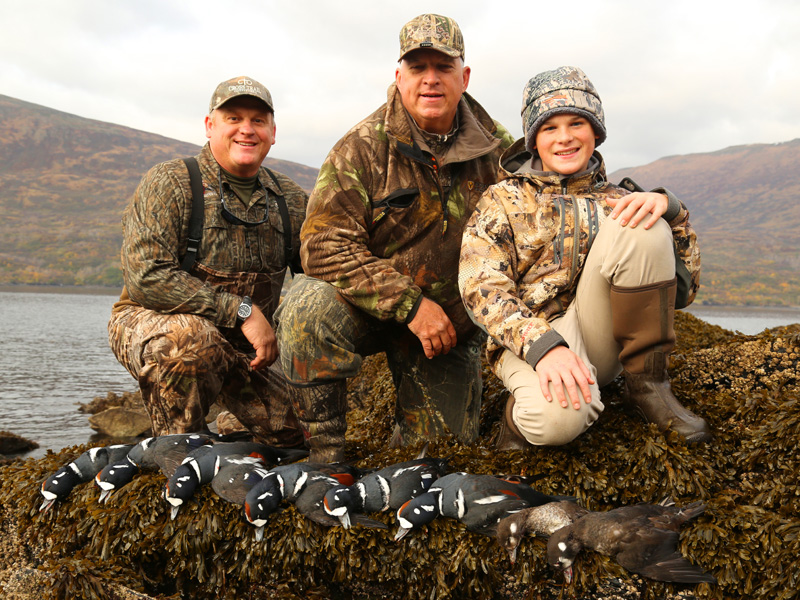
Other waterfowl species commonly found at Larsen Bay Lodge include black scoter, surf scoter, white-winged scoter, and oldsquaw (Long-Tail). When duck season opens in early October, a variety of puddle ducks are a bonus to the daily brace of harvested birds.
The only thing to rival the beauty of the waterfowl is the picturesque rugged coast of Kodiak Island where the hunting is conducted! Duck hunters are placed by boat on rocky points and small islands in pristine bays with snowy mountain backdrops. The shooting is a mixture of pass shooting and decoying birds. One unique feature of this type of hunting is that you are often shooting at a downward angle at flocks of low flying sea ducks, allowing you to see your shot pattern hits the water. This vividly illustrates whether you are shooting behind the duck and by how much! So you can actually work on your swing and improve your shooting skills as you hunt!Hunters are frequently moved from one location to another, providing multiple shooting angles and opportunities. You will not get bored, and you are never far from camp if you get cold. While duck hunting you can expect to see bald eagles, seals, sea otters, and spouting whales that will forever be etched into your memories of Larsen Bay Lodge.
To experience the true Larsen Bay Lodge mixed bag, after duck shooting, troll for king salmon along the shoreline while glassing the hillsides for a nice sitka blacktail buck! Then at the end of the day, pull the crab pot and enjoy all-you-can-eat steamed snow crabs that evening for dinner! It doesn’t get much better than that!!! At the end of your stay, your ducks, deer, and fish will be frozen in waxed a seafood box that you can check as luggage on your return home. But Be Warned! Once you experience the beauty, variety, and abundance at Larsen Bay Lodge, you will want to return again and again like so many of our satisfied clients!Here are a few things to remember
- Bring your own shotgun shells or purchase them in Kodiak at Wal-Mart, or Big Ray’s Sport Shop.
- Also, while chest waders are not necessary, neoprene waders provide warm waterproof protection against the elements. But you can get by with knee boots. See our List of Gear for complete details.
- Bear in mind that because you are hunting saltwater you need to clean and oil your guns each day after the hunt.
Preparing Ducks for Mounting
- Some taxidermist will tell you not to wrap the duck in paper towels because it draws the moisture out of the body and makes it more difficult to skin. Others taxidermists will tell you wrap it up in many layers of paper towel to dry the feathers out.
- If you want to make your taxidermist happy, stuff a cotton ball in the ducks mouth to keep blood from seeping out on the feathers.
- Either way, fold the duck's head under its' wing or back over its' body and carefully place it in a large ziplock plastic bag and write your name on the bag.
- For added protection you can use a plastic grocery - type bag then put the plastic bag in a panty hose leg, which will hold the feathers in place. Tie a knot in the hose and cut off the excess for the next bird.
- You can then put a piece of duct tape around the bird and write your name on it with a permanent marker.
